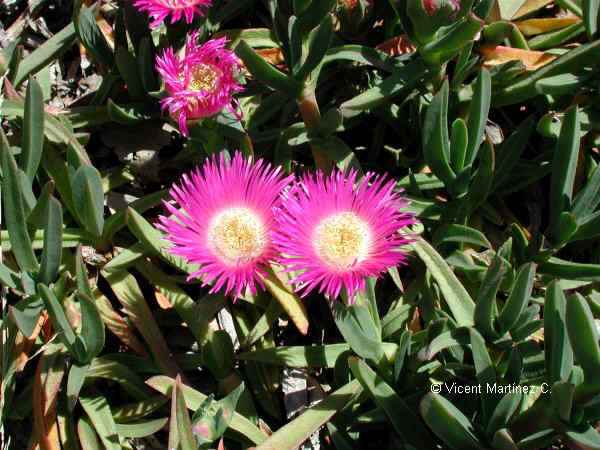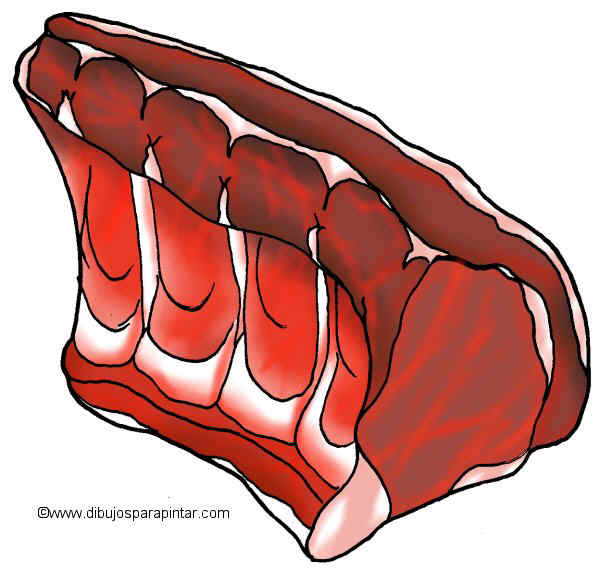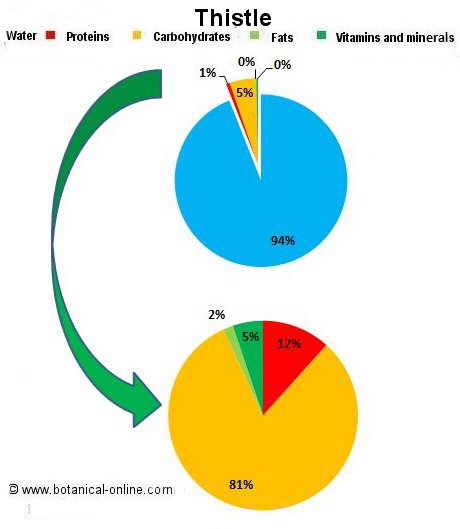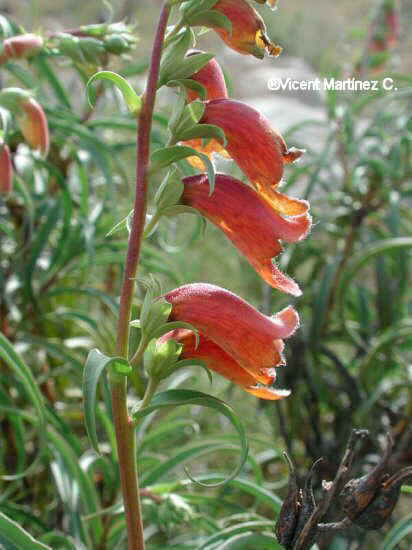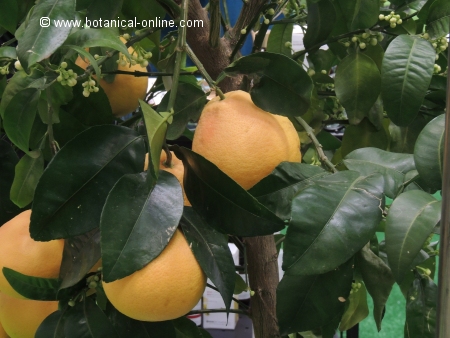Contents
What are the main diseases of tomatoes caused by fungi
What do tomatoes fungi have in common?
Many are the fungal diseases that affect tomato plants. All of them have in common a series of parameters:
- Infections are accentuated when heat and humidity are abundant.
- The fungi remain dormant in the vegetation of the soil to activate when the good weather arrives.
- Any of these diseases takes advantage of the wounds or the weakening of a plant to invade it.
For all these reasons, it is recommended that a series of general advice be taken into account that can prevent the contagion or avoid its development.
General advice to treat diseases of tomatoes caused by fungi
- Use seeds or seedlings guaranteed free of fungi.
- Use varieties that are resistant to diseases whenever possible
- Encourage aeration, especially in greenhouses, with plantations that allow air to circulate between them.
- Avoid sprinkler irrigation and use basic irrigation.
- Remove all plant debris immediately after harvest. In case of plantings on the ground a good plowing in depth after the harvest helps to eliminate the fungi.
- Eliminate weeds and other plants from the cropland. With them the competition is eliminated and the field of possible hosts of these mushrooms is freed.
- In crops on the ground, rotate crops with other vegetables that are not susceptible to these diseases. In most cases, one year of rotation will be enough for tomatoes.
Treatment against garden pests with garlic
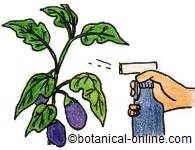
- 1 head of garlic (50g aprox.) and 5 liters of water are needed.
- Chop the garlic and let it marinate in 5 liters of water for about 1 week, in the fridge. Then the mixture must be strained.
- Dilute in half: 1 liter of mash with 1 liter of water.
- Place in a container to spray on the plants with a spray.
- It is effective against most pests and fungal diseases, aphids, red spider, etc.
Main tomato diseases caused by fungi
Gray mould or Botrytis (Botrytis cinerea)
Also known as »gray mold». It occurs when there is too much moisture in the environment, producing the rot of the plant. Dark spots appear on tomato leaves or gray rot on fruits.
It also produces the blackening of the inflorescence.The traditional crop uses some systemic insecticide combined with the elimination of the affected plants.
To prevent further infections it is recommended to stop growing plants of the affected genus for 4 or 5 years, select uninfected seeds or sterilize them with water at 45 ° C for half an hour.
We must be very prudent in the pruning of tomatoes so that the minor possible injuries that facilitate the penetration of this fungus are produced.
Tomato blight
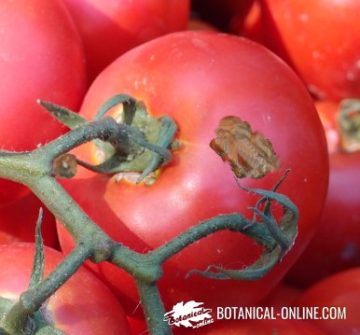
It is produced by the fungus Phytophthora infestans. It manifests in the form of light green or dark green spots in the leaves that give rise to a whitish layer on the opposite side of the back.
These damages go on producing the drying of the leaf and its subsequent fall.The disease can also focus on the stems producing dark chancres in them that can extend to affect its entire diameter.
All this produces a lack of nutrients that ends up killing the whole plant.It can affect the fruits by producing dark spots that appear on the upper part of it.
High humidity and heat conditions favor the development of this disease, which is why good aeration of crops is recommended, especially in greenhouses and irrigation that does not affect the leaves, such as sprinkler irrigation.
To prevent subsequent infections, all infected material must be eliminated and seeds or seedlings must be used that have a good sanitary guarantee. The use of resistant varieties is very convenient.
A sprinkling with sulfur or a sprinkling of bordeaux mixture before the onset of the disease can help prevent it.
If preferred, a disinfection can be used by ecological products such as horsetail (Equisetum ssp.) For this, a decoction must be made at 10% of the plant with which the tomato plants will then be fumigated. Its power to eliminate fungi and other insects increases if it is combined 50% with nettle slurry. (To make the nettle slurry, we will leave about 200 g of nettles in a liter of water for 4 days, we will take part of the resulting liquid and add 80 or 90% more of its weight in water.)
* More information: late blight
Powdery mildew
Produced by the fungus Leveillula taurica. It manifests in the form of yellow spots in the center of the beam of the leaves that has its corresponding whitish mark on the underside. In many cases it produces the fall of all the leaves of the plant. In case of infection, suitable fungicides should be applied. An equally effective solution is to apply sulfur powder.
* More information: Powdery mildew
Early blight of tomatoes
it is a disease caused by the fungus Alternaria solani (= Alternaria porri f.sp. solani). It produces spots on the leaves with dark background and yellow edges. It can cause the leaves to fall.
When the infection is important, it also attacks the fruits and stems. It is a disease that mainly affects during the hot summer months.
The best way to avoid it is to eliminate all the organic matter accumulated in the soil, since during the winter months this fungus lives in it.Other interesting measures are the control of excessive humidity through well-distributed plantations that allow the air to circulate well. Avoid too much watering and change the place of cultivation every year.
In case of infection, a commercial fungicide can be used. Sprinkle with sulfur can help prevent the spread of the disease.
Anthracnose of the tomato
Disease produced by the fungi Colletotrichum spp and Glomerella cingulata. They produce spots on the leaves and fruits that remind of sunburn.
Although it does not affect the plant in general, it spoils the fruits that make them disposable for sale.
* More information: Anthracnose
Tomato cladosporiosis or tomato leaf mold
It is characterized by the appearance of gray mold on the underside of the leaves caused by the fungus Cladosporium fulvum. It is a type of disease that occurs especially in greenhouses.
It produces yellow spots above the leaf that correspond to gray formations on the underside.
Like most fungi, it grows in crops with a high temperature and humidity. Since it can subsist on the vegetable remains of the soil it is recommended to clean the crops well. With adequate aeration we can prevent its development.In case of infection, a commercial fungicide can be used.
Septoria in tomato
Disease produced by the fungus Septoria lycopersici. The symptoms appear in the seedlings or in the leaves and stems of the adult plants. It produces circular spots with a light brown background surrounded by a dark brown circle.
It can also attack stems and flowers although rarely fruits.It is a fungus that affects Solanaceae, such as tomatoes, potatoes or aubergines. It can also infect other wild herbs of the same family
.It develops very well under conditions of heat and high humidity. Generally dormant during the winter in other wild solanaceous plants such as the blackberry (Solanum nigrum) or jimsons weed (Datura stramonium).
The treatment of this infection and its prevention are similar to the treatments recommended for the rest of fungal diseases.
Fusarium in tomatoes
Disease caused by the fungus Fusarium oxysporum that is found within the vascular system of the plant. The disease manifests itself with the yellowing of the oldest leaves. Other times they turn brown or blackish and deciduous.
The existence of the fungus can be verified by cutting a stem from the bottom. If the plant is sick it will present the blackish cut.
Since there is no chemical treatment that can solve this disease, it is necessary to adopt preventive measures that prevent infection. In case of suspicion, the field should be kept free of crops susceptible to this disease for a minimum of three years. (tomatoes, potatoes, aubergines.).
Fortunately we have resistant varieties, such as hybrids that have the acronym VFNT or VFN that indicate that they are resistant to fusarium.
Verticillium in tomatoes
Disease very similar to fusarium caused by the fungus Verticillium dahliae. It is treated as the previous
![]() More information on tomato diseases and cultivation
More information on tomato diseases and cultivation

